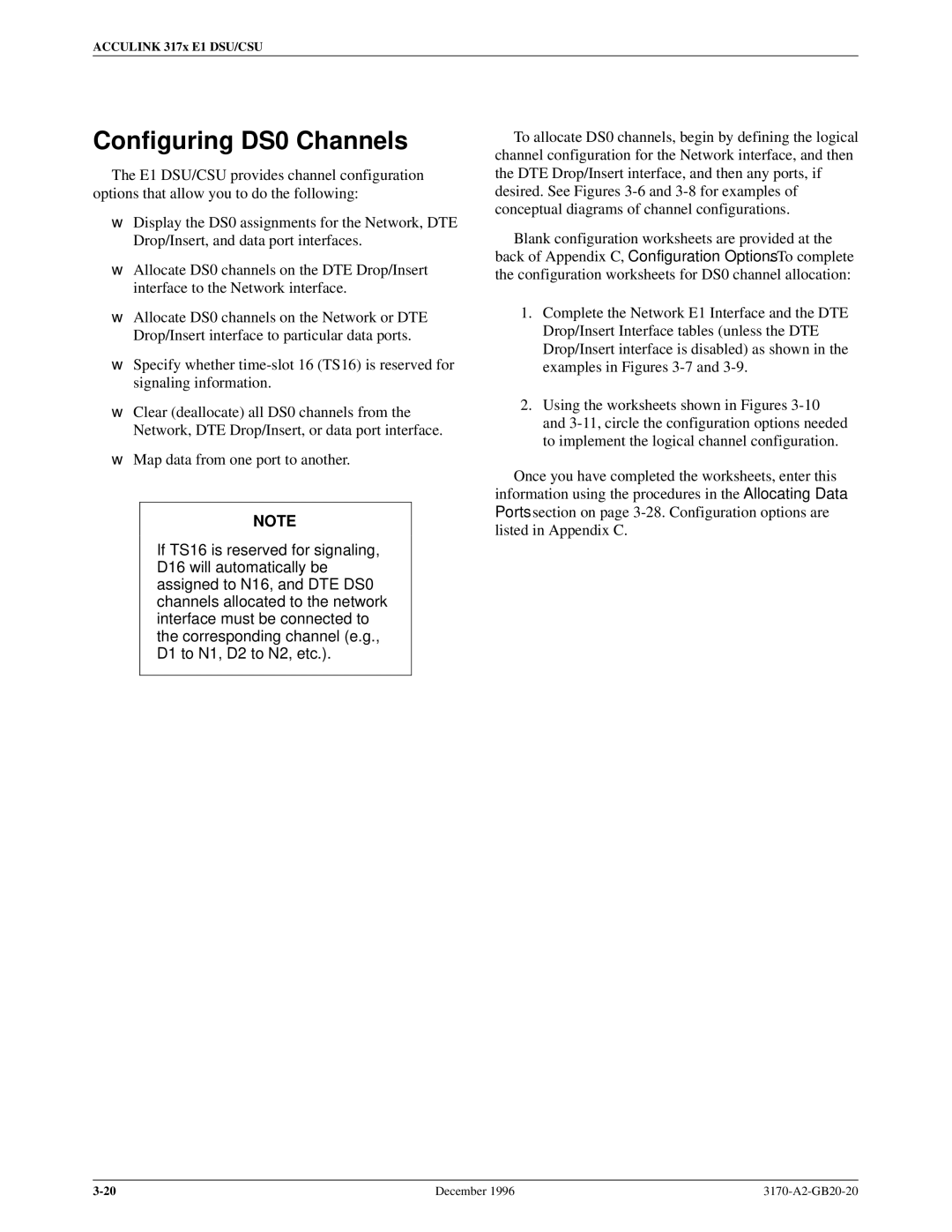
ACCULINK 317x E1 DSU/CSU
Configuring DS0 Channels
The E1 DSU/CSU provides channel configuration options that allow you to do the following:
•Display the DS0 assignments for the Network, DTE Drop/Insert, and data port interfaces.
•Allocate DS0 channels on the DTE Drop/Insert interface to the Network interface.
•Allocate DS0 channels on the Network or DTE Drop/Insert interface to particular data ports.
•Specify whether
•Clear (deallocate) all DS0 channels from the Network, DTE Drop/Insert, or data port interface.
•Map data from one port to another.
NOTE
If TS16 is reserved for signaling, D16 will automatically be assigned to N16, and DTE DS0 channels allocated to the network interface must be connected to the corresponding channel (e.g., D1 to N1, D2 to N2, etc.).
To allocate DS0 channels, begin by defining the logical channel configuration for the Network interface, and then the DTE Drop/Insert interface, and then any ports, if desired. See Figures
Blank configuration worksheets are provided at the back of Appendix C, Configuration Options. To complete the configuration worksheets for DS0 channel allocation:
1.Complete the Network E1 Interface and the DTE Drop/Insert Interface tables (unless the DTE Drop/Insert interface is disabled) as shown in the examples in Figures
2.Using the worksheets shown in Figures
Once you have completed the worksheets, enter this information using the procedures in the Allocating Data Ports section on page
December 1996 |
